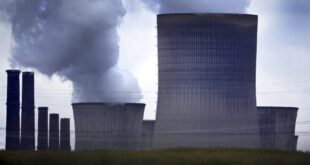A rising electrification of energy. rapid deployment of renewable energy sources. and a steady decline of the coal industry are all predicted as major shifts in the global energy scene over the next 25 years in the International Energy Association`s (IEA) annual flagship publication.
These changes will come alongside a shifting balance of traditional global energy producers and consumers. according to The World Energy Outlook 2017. report. which presents various projections of what the energy system will look like by 2040.
The main case is called the New Policies Scenario. which models current energy policies. including those in the Paris Agreement. With a focus on key anticipated shifts in the global energy outlook. edie has pooled together the seven standout predictions from that scenario.
1) Global energy demand accelerates
With an expected world population of 9 billion by 2040. the IEA anticipates that global energy demand will rise by 30% by this time – the equivalent of adding the energy needs of another China and India. The report notes that without improvements in energy efficiency. the projected rise in final energy usage would more than double.
India is expected to contribute almost 30% of the demand growth. with developing countries in Asia projected to account for another two-thirds. The rest will come predominantly from the Middle East. Africa and Latin America. according to the IEA. It is thought that the growth in energy use will be driven mainly by a rising demand for electricity. set to make up 40% of the rise in final consumption to 2040.
2) Carbon emissions on the rise
Despite broadly remaining flat in the past three years. global CO2 emissions are expected to increase slightly by 2040. However. projected emissions are 600 million tonnes lower than in last year’s outlook. with China’s emissions expected to start falling in the late 2030s.
Emissions in the power sector will be limited to a 5% rise by 2040. IEA says. even though global electricity demand will grow by 60%. But the report warns that this encouraging development will not be matched in other sectors. The transport sector will reportedly catch up with the coal industry in terms of emissions from oil use. while it is believed emissions from manufacturing operations will rise by 20%.
3) Renewables enter the mainstream
Renewable energy. set to become a cheaper form of new power generation that gas by the mid-2020s. is expected to meet two-fifths of the increase in primary demand. Fast-declining costs will allow solar to enjoy the largest share of low-carbon capacity. according to the report. with major investments in China and India.
The IEA states that a strong emphasis on cleaner energy technologies and reduced reliance on heavy industry and coal will catapult China to a position of global leadership in renewables – the country is expected to account for one-third of the world’s new wind power and solar PV.
Soon after 2030. wind power is expected to become the leading source of electricity in Europe. where renewables are projected to account for 80% of new capacity. Policy mechanisms to support renewables will come increasingly through competitive auctions rather than feed-in-tariffs. the IEA says
4) Coal industry in decline
The growth of low-carbon energy sources and absence of large-scale carbon capture and storage will reportedly signify the “end of the boom years“ for coal. which is expected to decline by almost 15%. Net additions of coal-fired power generation capacity from now to 2040 will be around 400GW. according to the IEA. less than half of the increased capacity since 2000. The share of coal in India’s energy mix. meanwhile. is expected to decline from three-quarters to less than half.
5) Booming global EV fleet
The IEA says that the global car fleet will double to reach two billion. although fuel efficiency and rising electrification will bring a peak in oil used for passenger cars. The global EV fleet is anticipated to surge from two million today to 280 million by 2040. guided by policy support and plummeting battery costs. More than 40% of global investment in EVs will come from China. where one-in-four cars will be electric. the IEA notes.
6) Oil and gas here to stay
“It is far too early to write the obituary of oil.“ the report claims. “as growth for trucks. petrochemicals. shipping and aviation keep pushing demand higher“. Global oil demand is expected to continue to grow to around 105 million barrels a day by 2040. while natural gas use is projected to rise by 45% to 2040. with industrial demand becoming the largest area for growth.
It is thought the US will become the undisputed leader for oil and gas production – the country is projected to account for 80% of the increase in global oil supply to 2025 and reach a level of gas output 50% higher than any other country has ever managed. Consumers in Asia will account for more than 70% of global oil and gas imports by 2040. the IEA states. with China set to provide a quarter of the projected rise in gas demand.
7) Sustained air quality health threat
The health impacts of global emissions will remain severe. the IEA warns. Demographic shifts such as ageing populations and urbanisation are expected to increase exposure to pollutants. Premature deaths from outdoor air pollution will rise globally from three million today to more than four million in 2040. despite more energy services being provided more efficiently or without fuel combustion.

 Iran Energy News Oil, Gas, Petrochemical and Energy Field Specialized Channel
Iran Energy News Oil, Gas, Petrochemical and Energy Field Specialized Channel



